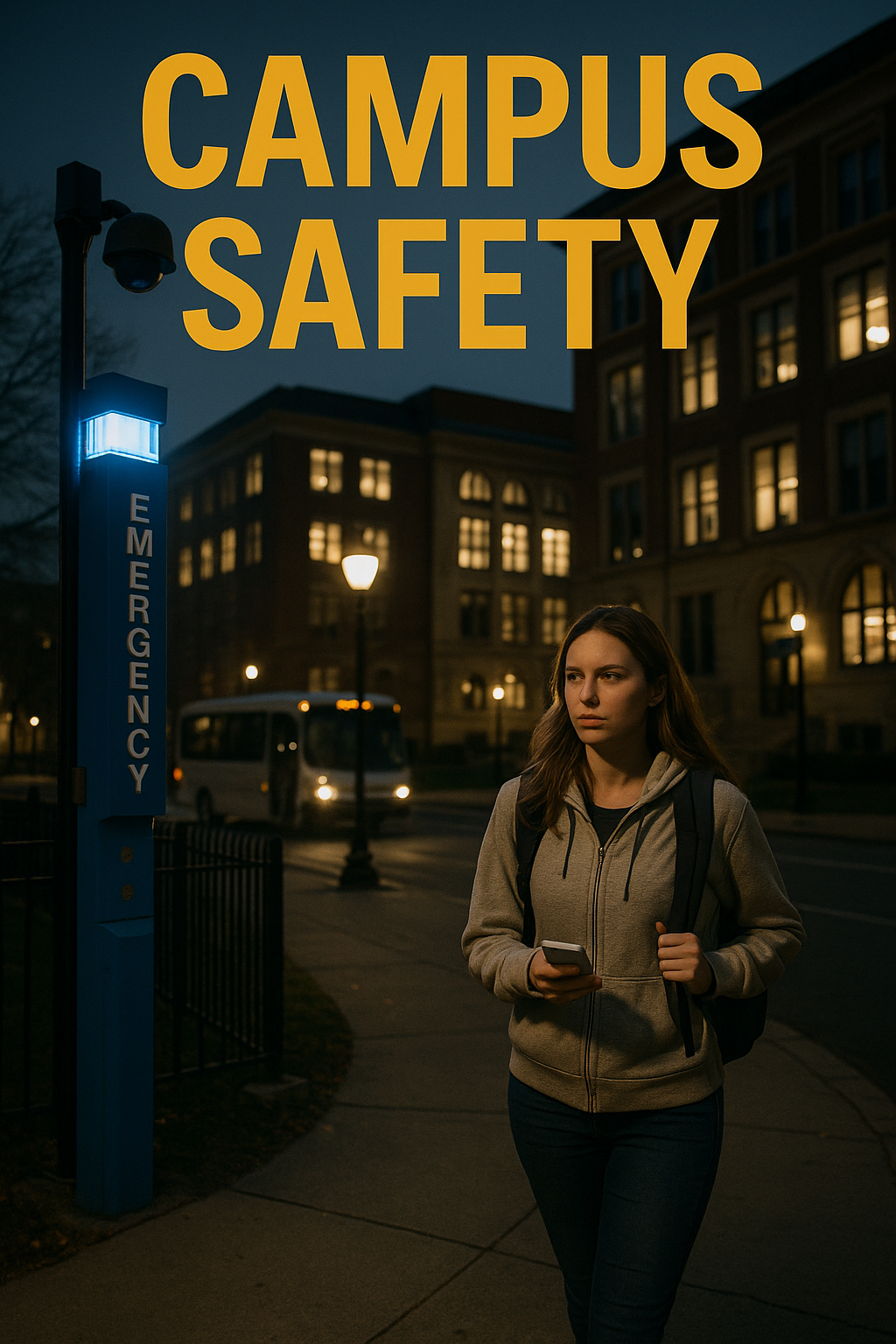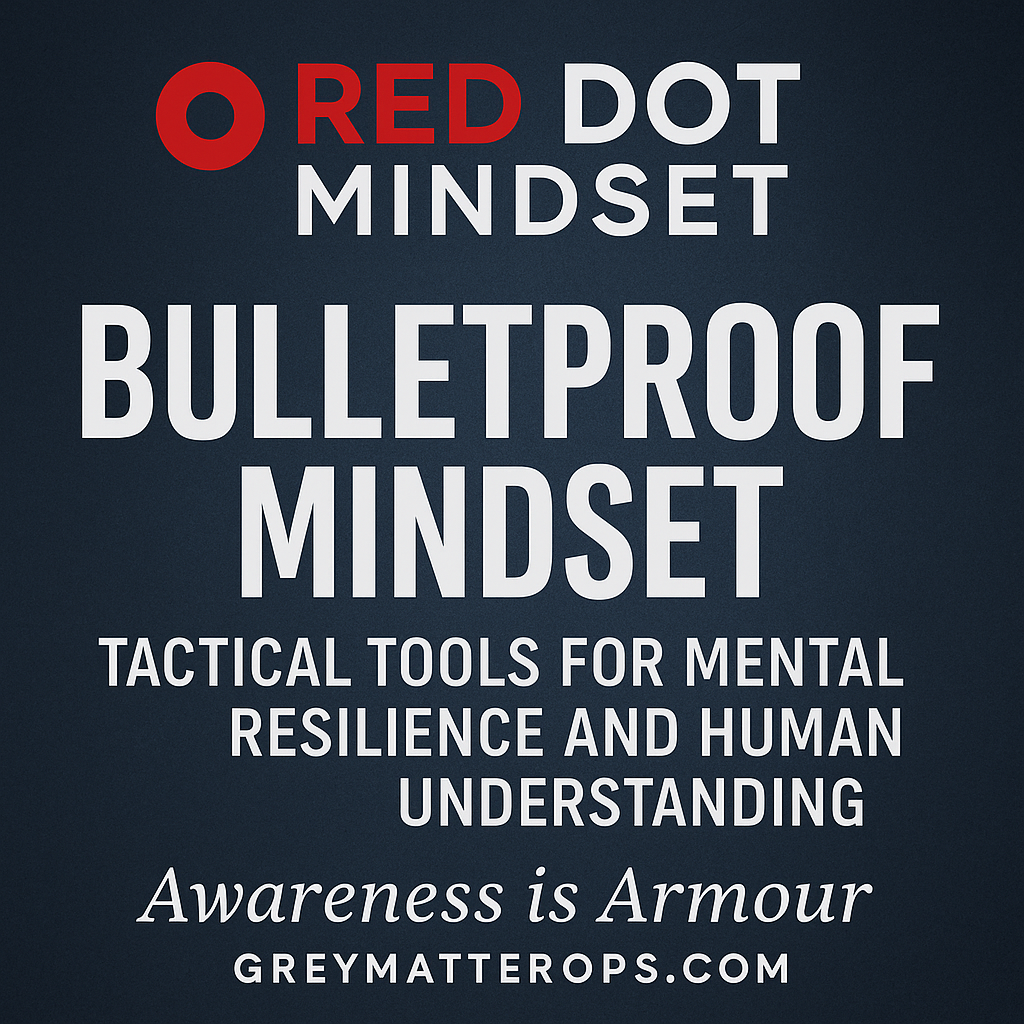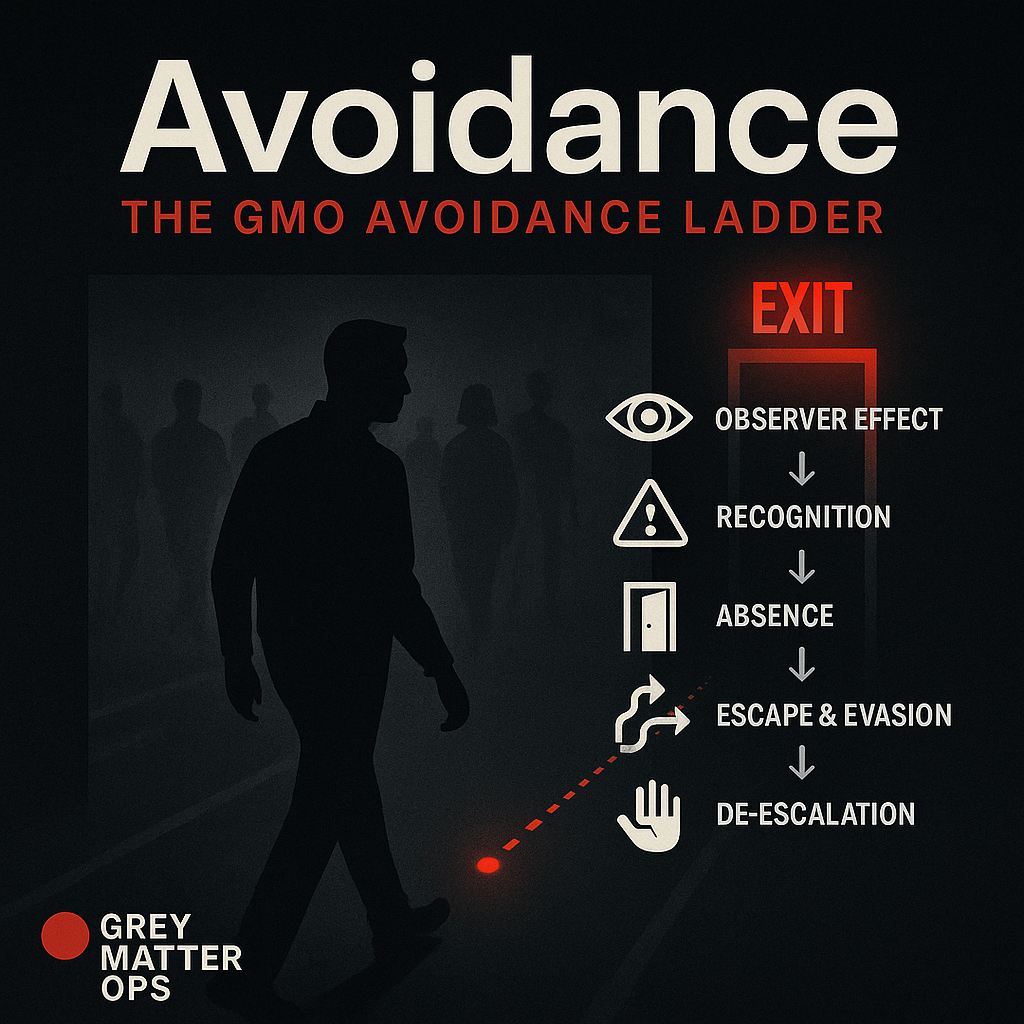Episode Transcript
🧠 Tactical Brief: Signal & Edge: Decoding The Gift of Fear Signal & Edge: Decoding The Gift of Fear
Developed by: Mickey Middaugh — Founder, Grey Matter Ops™ | Tactical Mindset & Civilian Preparedness
Series: Red Dot Mindset™ Podcast Deep Dive
Mission Motto: Train the Mind. Win the Fight.™
🎯 Mission Objective
Decode The Gift of Fear through the Grey Matter Ops™ tactical lens—transforming instinct from a vague feeling into actionable data. Understand the difference between fear and anxiety, identify pre-incident indicators, and develop trust in your internal radar before danger materializes.
⚡ Core Concept: Intuition as Tactical Data
Fear is not weakness; it’s intelligence.
Your intuition is a subconscious, real-time processor scanning for anomalies your conscious mind might miss. When it signals—move, disengage, act.
Fact: Over 80% of violent crime survivors reported sensing danger beforehand. They knew—they just didn’t act on it.
🧩 True Fear vs. Anxiety
True Fear: Present-focused, triggered by an immediate cue. A data-driven alert that demands action.
Anxiety: Future-focused speculation—mental noise that drowns out valid threat signals.
Protocol: Filter out anxiety to preserve clarity. Real fear is concise, purposeful, and calm.
🕵️♀️ Pre-Incident Indicators (PINS) — The Predictable Pattern
Attackers reveal intent long before they act. Recognizing these cues turns you from target to tactician.
Forced Teaming — “We’re in this together.”
False familiarity used to lower your guard.
Counter: Maintain the Grey Line—no shared mission, no shared trust.
Excessive Charm & Niceness — Manipulation masked as kindness.
In 90%+ of incidents, charm preceded violence.
Counter: Charm is not character. Trust patterns, not presentation.
Discounting “No” — Testing resistance.
Every ignored “no” is a rehearsal for control.
Counter: “No” is a complete sentence. Enforce it with posture, distance, and decisive movement.
🔄 Pattern Recognition
Violence is rarely random. De Becker’s data shows an average of five warning signs precede an attack.
Your role: identify, assess, and respond before escalation. This is living Left of Bang—the decisive zone of prevention.
🧠 Mindset Shift: Confidence Over Fear
Trusting instinct isn’t paranoia—it’s precision.
When you calibrate your internal radar, you operate with calm control, not chronic suspicion. Your awareness becomes armour; your clarity becomes your edge.
📊 Key Takeaways
Intuition is evolutionary intelligence, not emotion.
Boundaries protect before gear does—defend your no.
Politeness kills; awareness saves.
Recognize manipulation as pre-attack behavior, not misunderstanding.
Awareness Is Armour™—and your first weapon is attention.
📚 Sources Acknowledged
Gavin de Becker — The Gift of Fear
Grey Matter Ops™ — The Grey Line Framework
U.S. Department of Justice Crime Data (Survivor Intuition Statistics)
Dr. J. Reid Meloy — Violence Risk and Affect Heuristics
🛡️ Footer — Grey Matter Ops™
Train the Mind. Win the Fight.™
Stay Grey. Stay Ready.™
Awareness Is Armour.™




